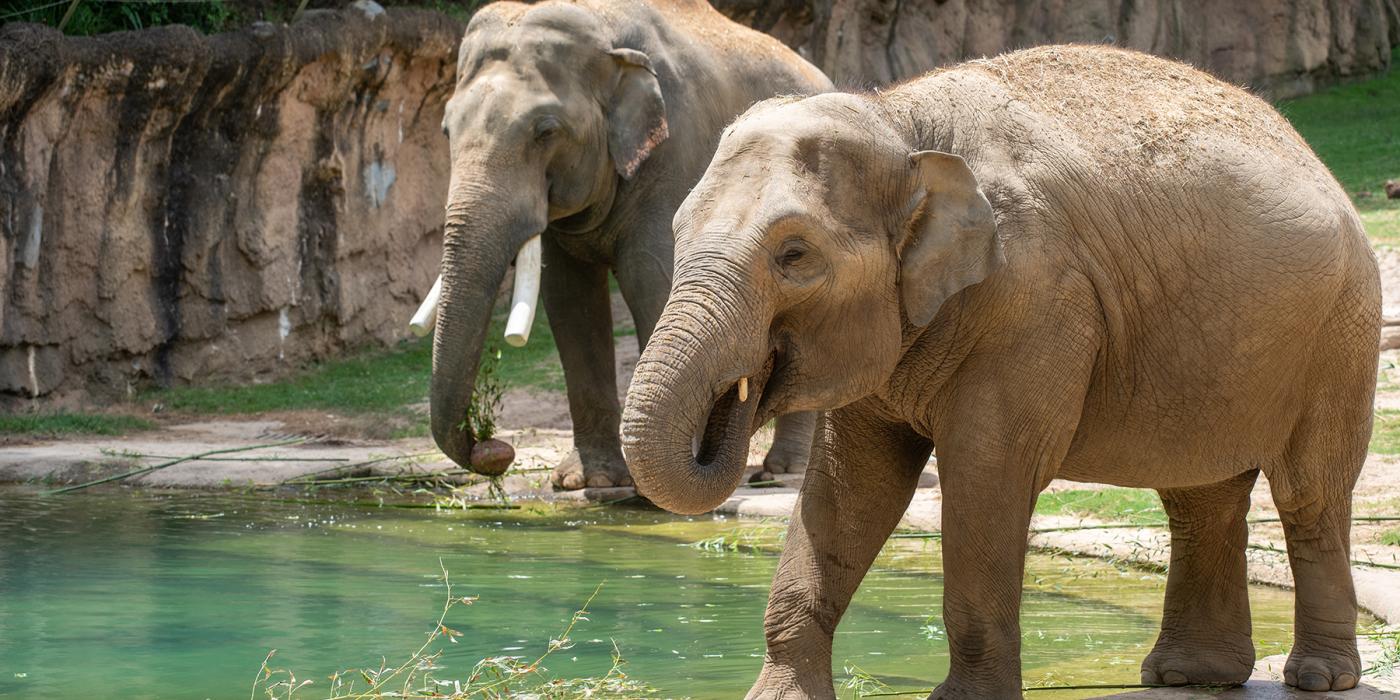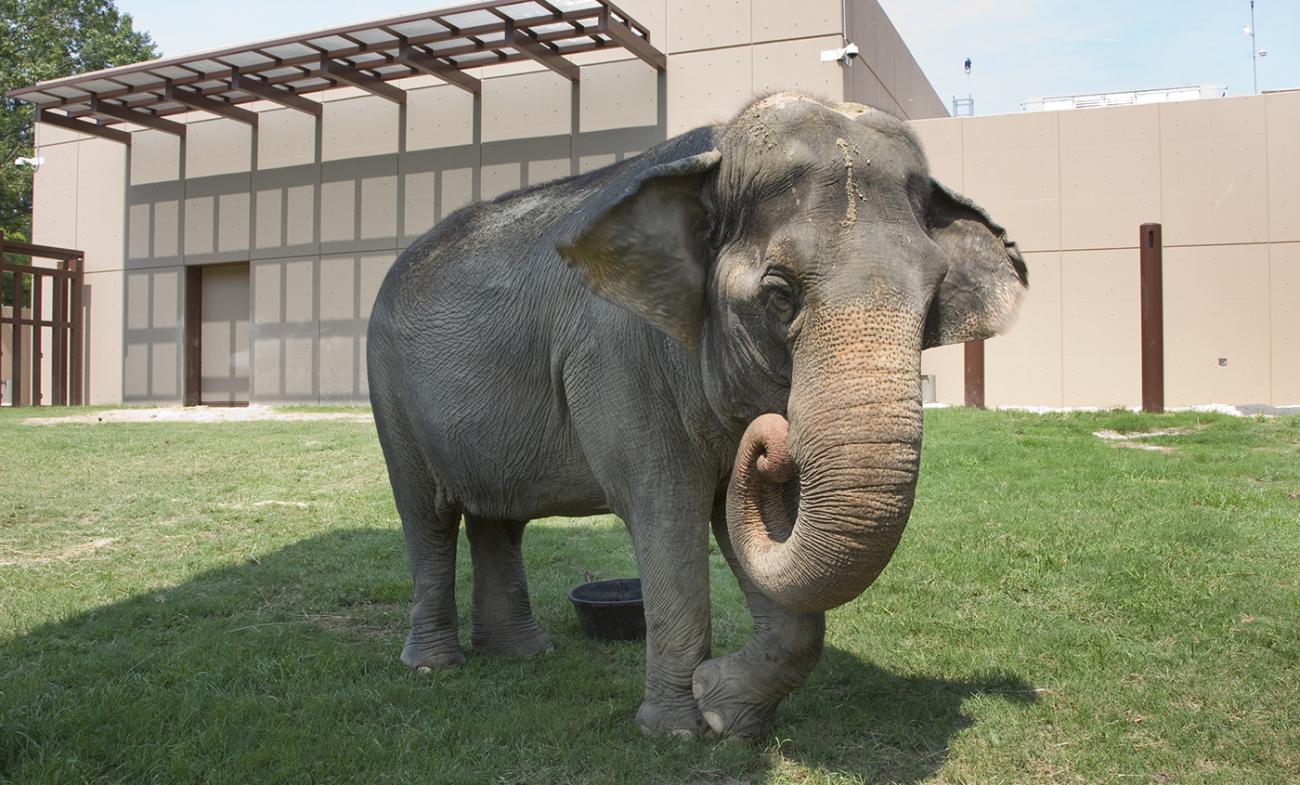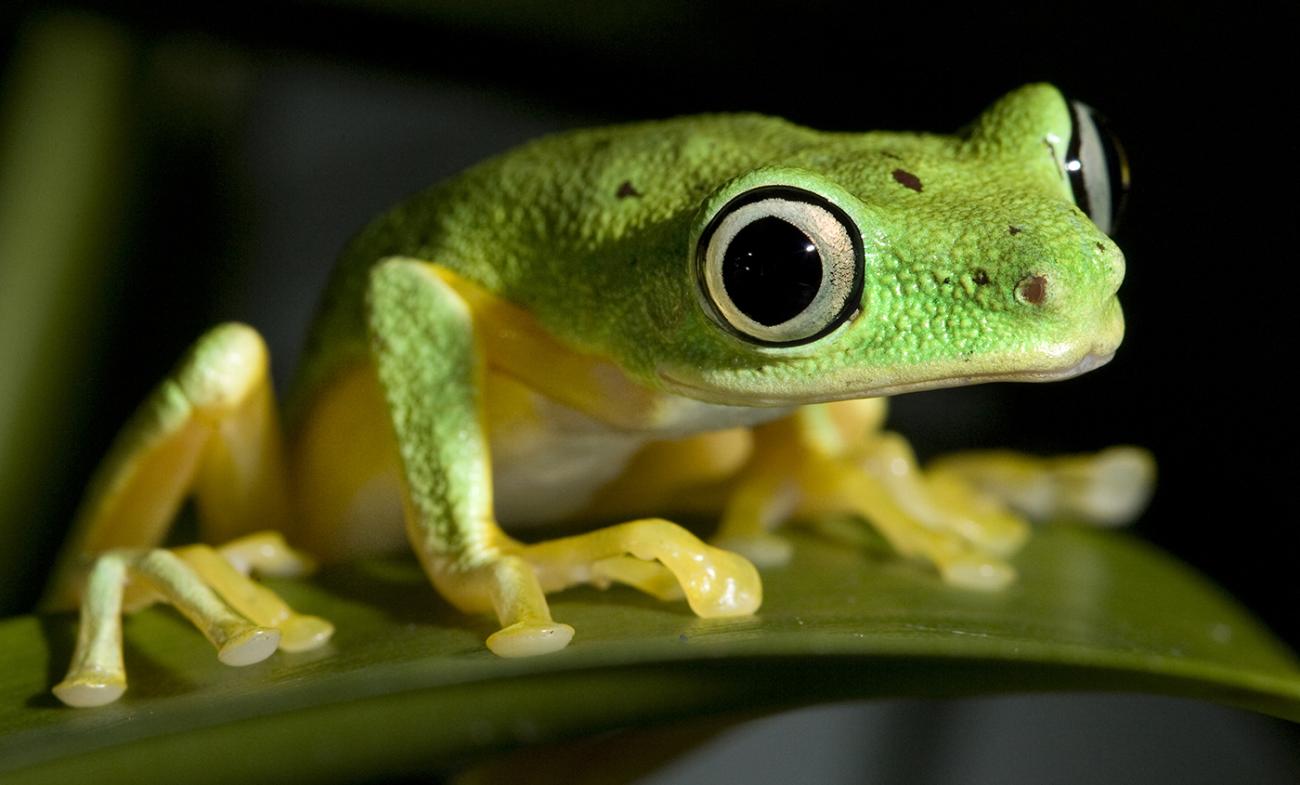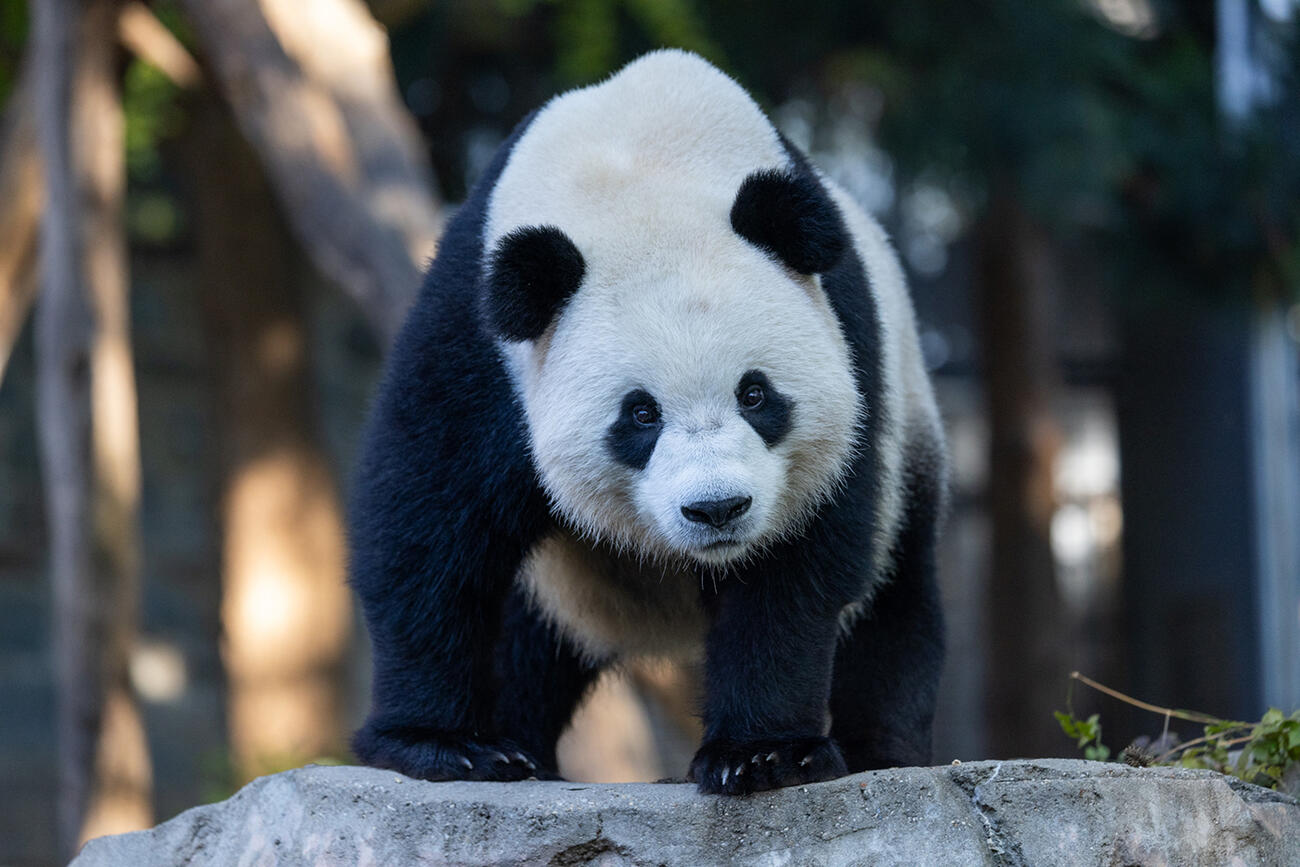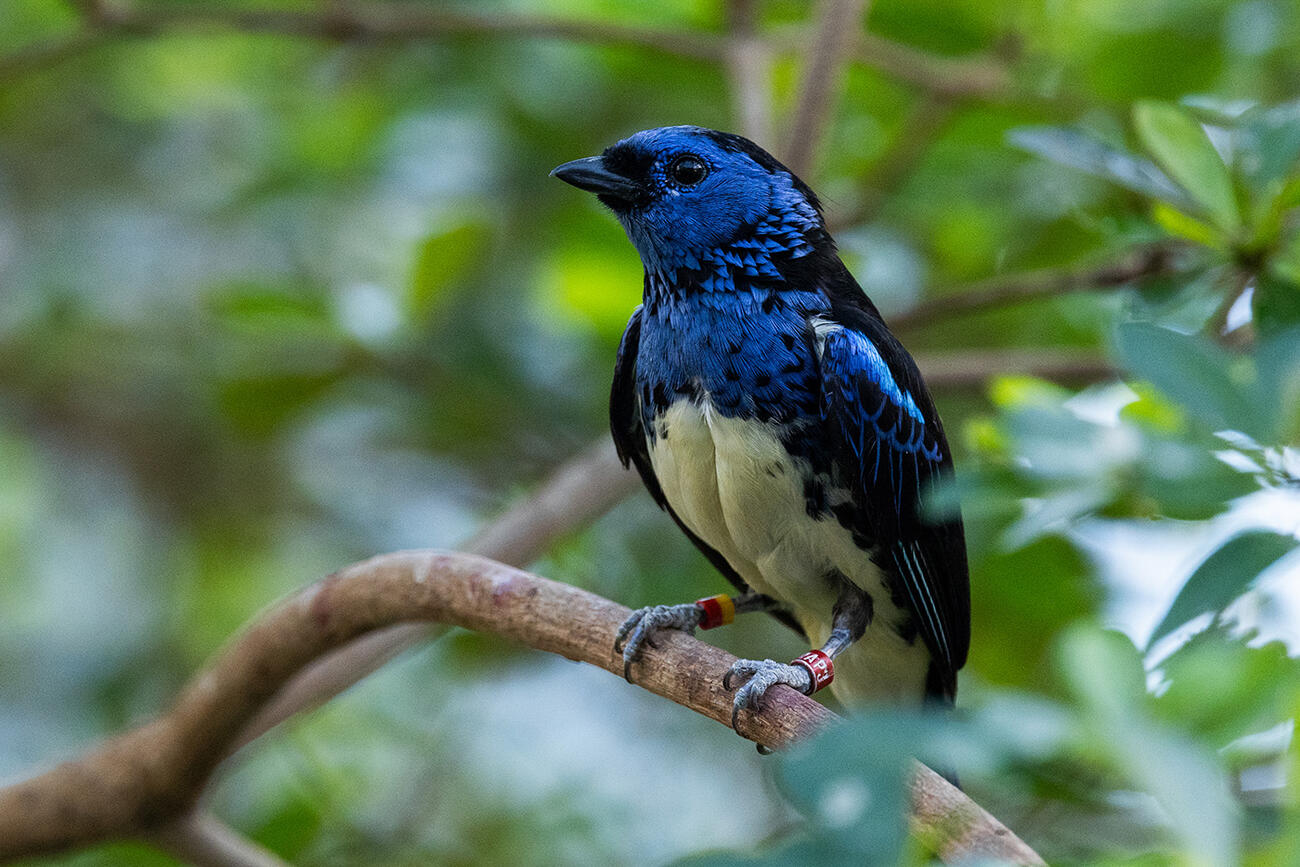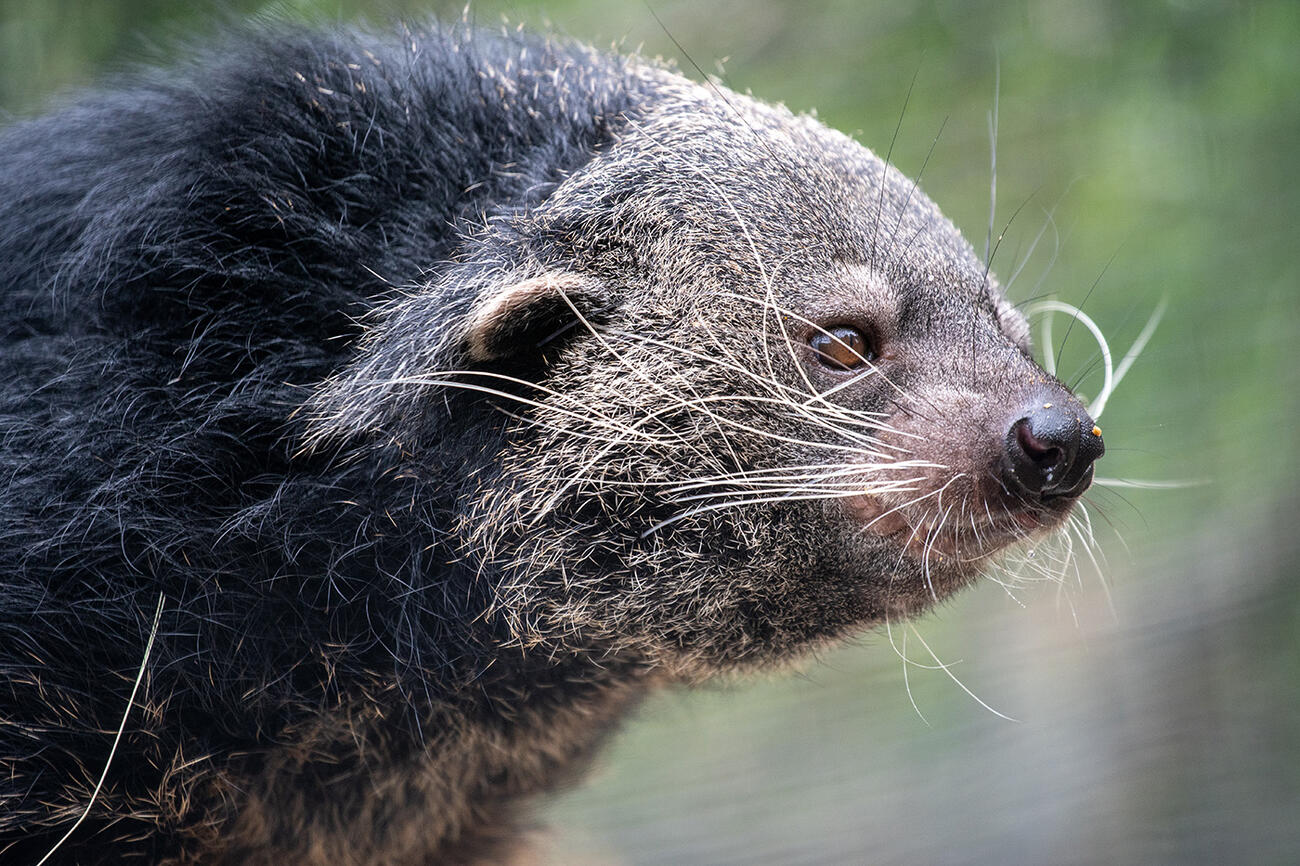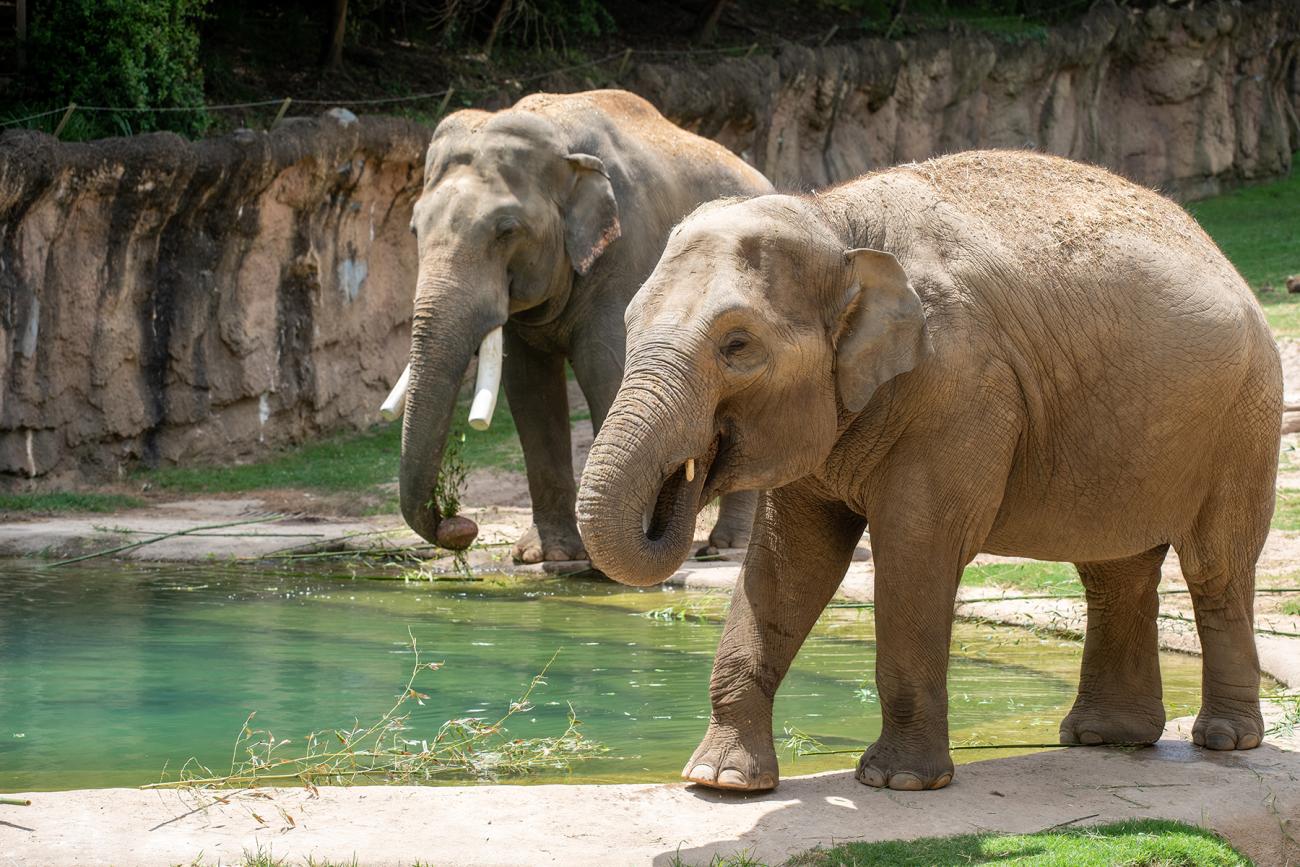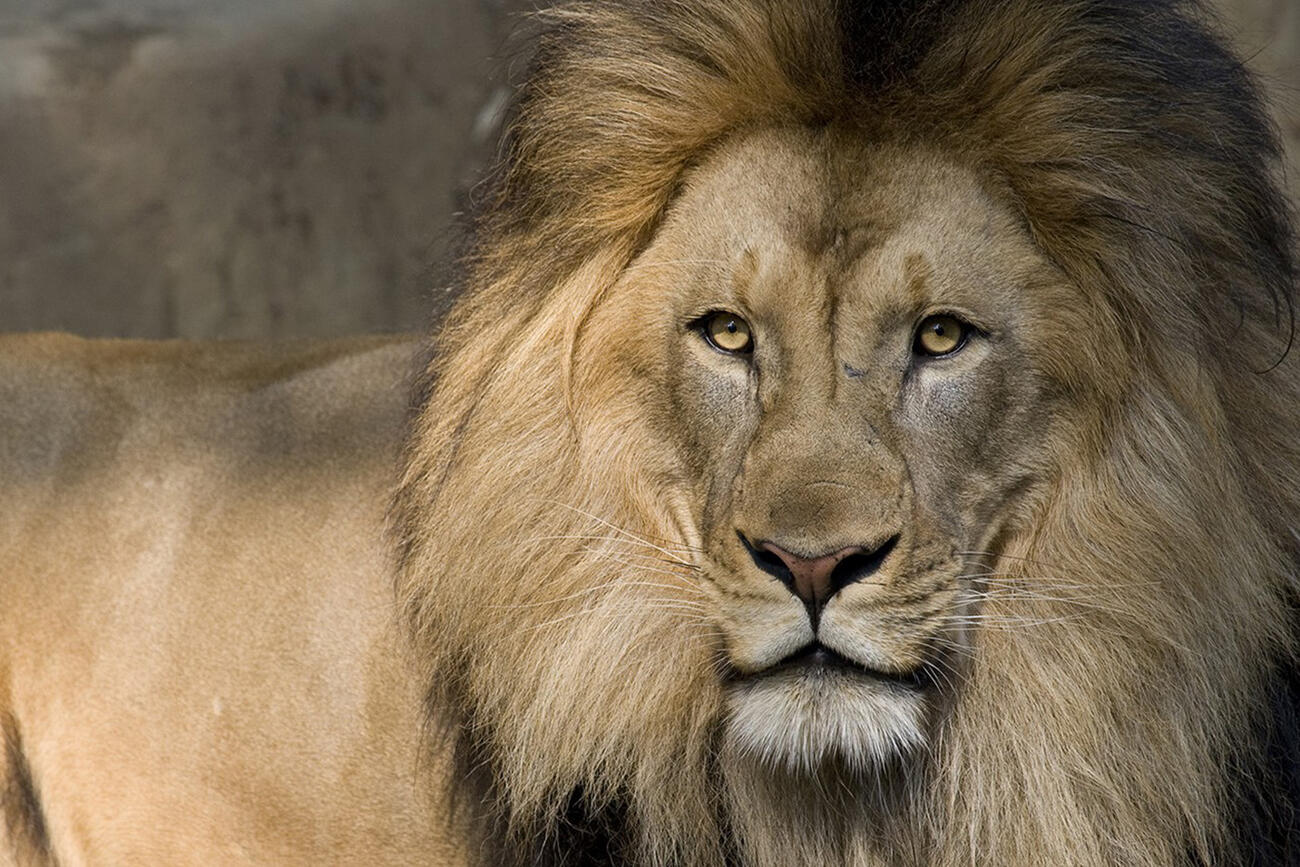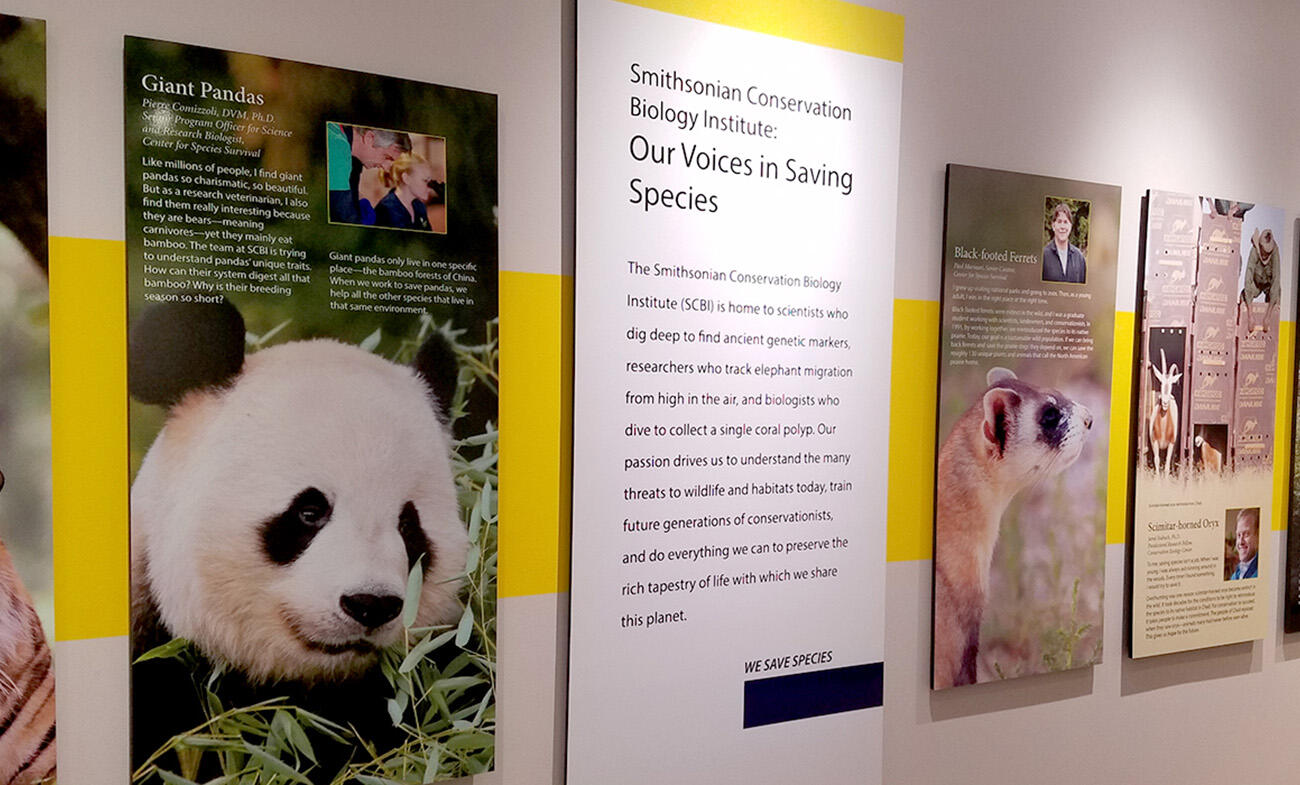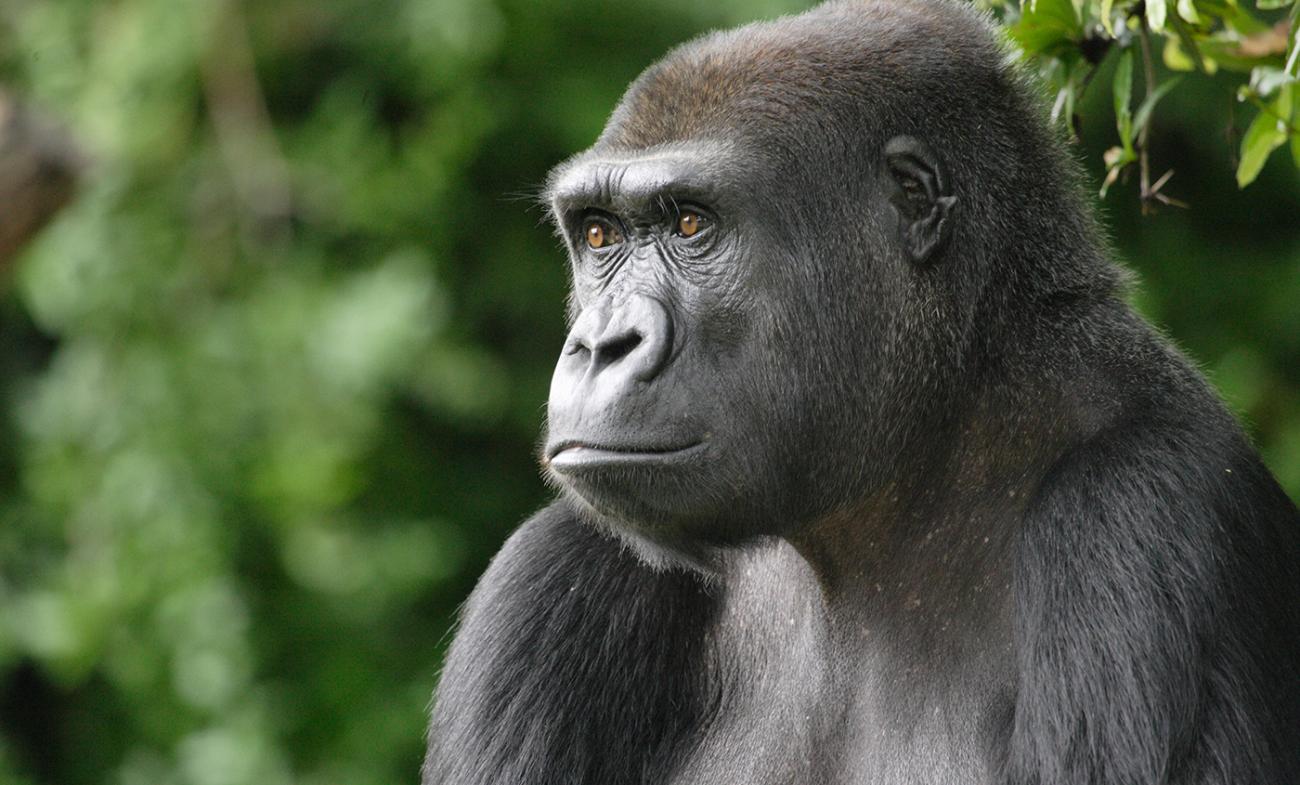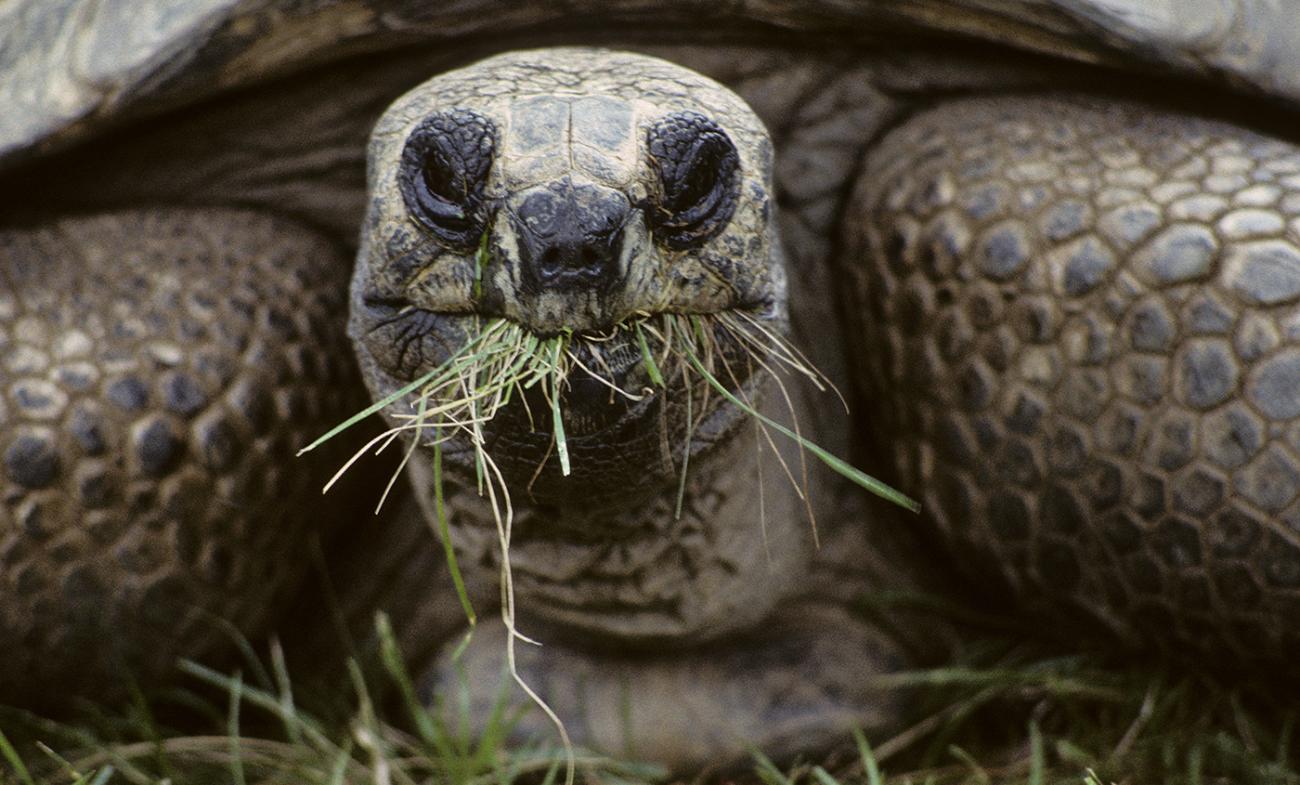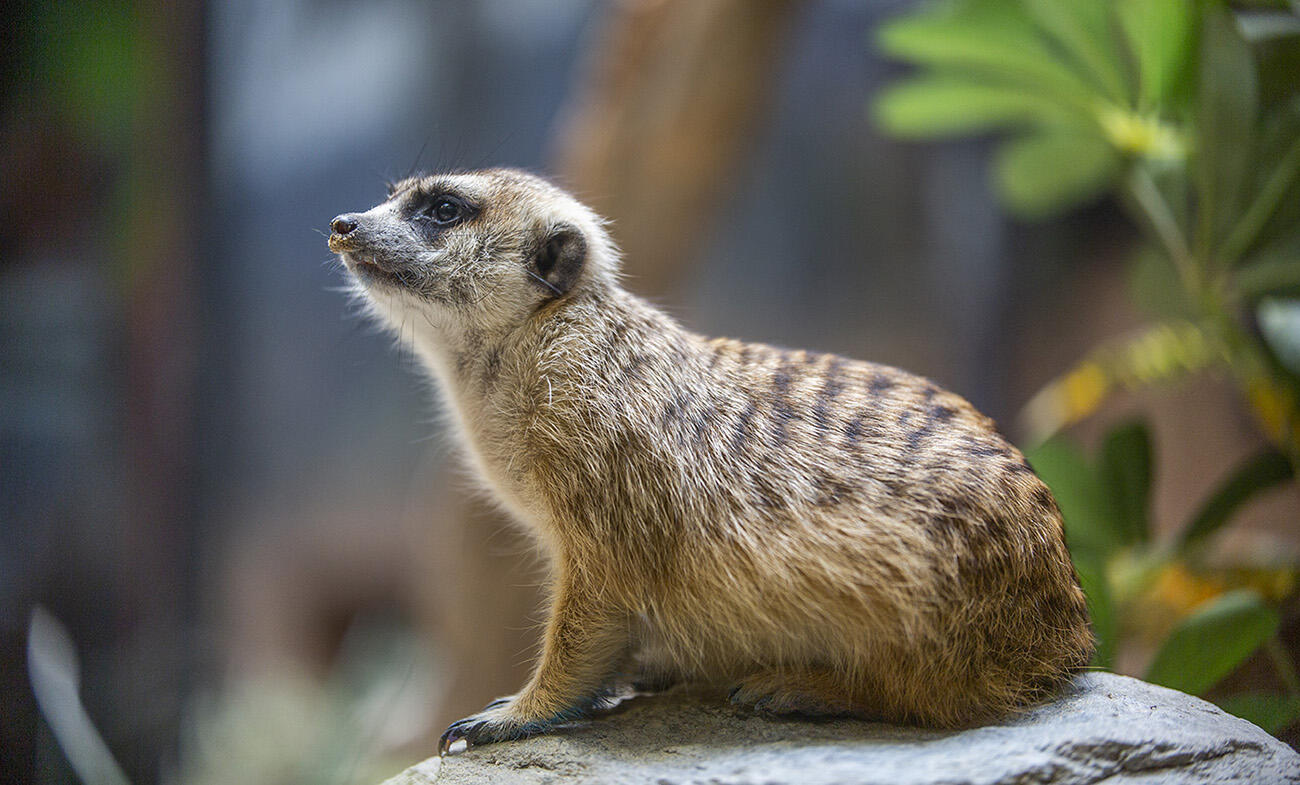Animals in this Exhibit
Elephant Trails is more than an exhibit; it is also an extensive conservation program built on decades of science. The Smithsonian’s National Zoo’s rich history of caring for and studying Asian elephants spans more than a century.
Scientists at the Zoo and Smithsonian Conservation Biology Institute are working to create a comprehensive view of Asian elephant biology, behavior, reproduction, genetics, migration, elephant endotheliotropic virus (EEHV) and the challenges surrounding human-elephant conflict. Elephant Trails — where visitors can experience the sights, sounds and smells of the multi-generational herd — is the cornerstone of the campaign to save this endangered species from extinction. Online visitors can catch a glimpse of the Smithsonian's National Zoo's elephants on the Elephant Cam.
While six elephants (five females and one male) currently live on Elephant Trails, the exhibit is large enough to house between eight and 10 adult elephants and their young. Although the elephants don't need to travel at the Zoo, Elephant Trails give them ample space to move around. Within the Elephant Community Center and the surrounding outdoor yards, the elephants have their choice of four pools for bathing, swimming and playing in the warmer months.
Unique to the Zoo, the Elephant Trek provides outdoor exercise experiences for the Zoo’s elephants. Visible from the Homer and Martha Gudelski Elephant Outpost, the quarter-mile path winds its way through the woods between Elephant Trails and the Bird House, simulating the elevated terrain of their natural habitats.
Elephants are very intelligent, so the Smithsonian’s National Zoo provides them with enrichment activities to ensure they stay sharp. Often, keepers will entice the elephants to investigate objects by hiding some of their favorite foods inside. Specially designed nooks and puzzle feeders challenge the elephants to think and problem solve to retrieve the treats inside.
Caring for Elephants
The pachyderms are provided with everything they need to survive and thrive, including first-class medical care, dedicated nutrition plans, training sessions, exercise and enrichment. The elephant team interacts with the animals through a protective barrier, a standard practice for zoos that are accredited by the Association of Zoos and Aquariums.
The bulk of the elephant space is covered in natural substrates (grass, dirt and sand outdoors, sand stalls inside), although a number of indoor enclosures have a rubber coating on the floor. Rubber floors provide good cushioning and a cleanable surface during the elephants' baths. There are also a few areas that have broom-finished concrete or pavement. The combination of hard and soft surfaces allows the Zoo’s elephants to choose areas most comfortable to them.
The Elephant Barn which is next to the Elephant Community Center, contains five ‘suite’ enclosures that can accommodate individual and multiple elephants. Browse (vegetation, such as shoots and leaves, that is suitable for animals to eat) is stored in a climate-controlled space where misters keep it fresh until it is given to the animals. An on-site kitchen enables keepers to store fruits, vegetables and leaf-eater biscuits among other foods. The Barn is not open to visitors.
Elephants are very intelligent, so the Smithsonian’s National Zoo provides them with enrichment activities to ensure they stay sharp. The enrichment program provides physically and mentally stimulating toys, activities and environments for the Zoo's animals. An exhibit’s design is carefully and deliberately planned to ensure the comfort, safety and health of the animals. Each enrichment is tailored to give an animal the opportunity to use its natural behaviors in novel and exciting ways.
At the Zoo, the elephants receive daily, weekly, monthly and even annual enrichment to ensure that no two days are ever the same. Keepers may add novel objects — like musical instruments, tractor tires, bungee chords, scratch trees or boomer balls — to encourage the elephants to play with and manipulate objects. Near the top of the hill, elephants are attracted to a 10-foot-tall tree to which keepers have added toys, browse and food-filled paper bags.
Often, keepers will entice the elephants to investigate these objects by hiding some of their favorite foods within. Specially designed nooks and puzzle feeders challenge the elephants to think and problem solve to retrieve the treats inside. Elephants are able to learn quickly, so keepers continually alter and enhance enrichment objects to keep the experience fresh, fun, and interesting for the animals. Hanging above an elephant’s head, bamboo on the zipline encourages natural foraging behavior. In addition to bamboo, elephants eat about 100 pounds of food each day including seasonal fruits and vegetables, hay and grain supplements.
Enrichment has been incorporated into the design of the enclosure as well. Tall shade structures provide protection from the sun in warmer months, heat in the cooler months, and a source for hanging bungees for the elephants to push and pull. Trees and foliage provide visual interest as well as shade, foraging opportunities and privacy, giving the elephants many options in how they use the habitats. Looking for a warm spot for a nap, elephants follow the afternoon sun as it peeks through the branches of large shade trees on the ridge. The shade changes location throughout the day, encouraging the elephants to move about the habitats to regulate their own body temperature.
Within the Elephant Community Center and in the surrounding outdoor yards, the elephants have their choice of four pools for bathing, swimming and playing in the warmer months. The Elephant Trek provides outdoor exercise experiences for the Zoo’s elephants. The quarter-mile path winds its way through the woods between Elephant Trails and the Bird House, simulating the type of elevated terrain of their natural habitats.
Social interaction is a critical component of caring for elephants. At the Zoo, the elephants socialize with each other and with their keepers. Every day, each elephant has the opportunity to train with a keeper. In these sessions, keepers cue the elephants to present their trunks, feet, ears, shoulders and rear ends to the keepers for a close inspection.
Elephants always have a choice to participate or not, but most of them seem to enjoy the challenge of the routine. Most importantly, these sessions allow keepers to closely monitor the health of the animals and look for any injuries. The Zoo uses positive reinforcement training; every time the elephants do a behavior asked of them, they're rewarded with fruit or leaf-eater biscuits — two of their favorite treats.
The Zoo’s elephants are participating in a multi-year behavior study looking at how they spend their day. This study helps the animal care team assess any changes that should be made to the enrichment program.
Restrooms are located at the Elephant Outpost and feature light-hearted information and graphics that highlight fun facts about elephant bodily functions.
Asia Trail is located adjacent to the Elephant Community Center. Visitors can observe red pandas, Asian small-clawed otters, fishing cats, clouded leopards and sloth bears at this location. Each day, keepers toss novel foods and enrichment items to some of the animals on the trail (weather dependent).
American Trail is located adjacent to the Elephant Outpost. Visitors can observe seals, sea lions, red wolves, beavers, ravens and bald eagles at this location. At 11:15 a.m. and 1:15 p.m. daily, visitors can watch training demonstrations that highlight the pinnipeds’ natural behaviors.
The Small Mammal House is located across from the entrance to the Elephant Outpost. Visitors can observe more than 30 species and attend daily feedings and demonstrations.
Elephant Trails is more than an exhibit; it is also an extensive conservation program built on decades of Zoo science. For more than 50 years, Smithsonian Conservation Biology Institute scientists have been at the forefront of studying Asian elephants at the Zoo and in their native habitats. Together, they are creating a comprehensive view of Asian elephant biology, behavior, reproduction, genetics, migration, elephant endotheliotropic virus (EEHV), and the challenges surrounding human-elephant conflict. Because of its existing relations with U.S. and foreign governments, non-governmental organizations, and major academic and zoological institutions in elephant range countries, the Zoo is uniquely positioned to spearhead efforts that improve life for Asian elephants in zoos and save them in the wild.
Elephant Endotheliotropic Herpesvirus (EEHV)
EEHV is the greatest threat to the Asian elephants today with a fatality rate of 80 percent. First identified by Zoo and SCBI scientists have identified more than 60 cases of EEHV in the global elephant population in human care since it was first documented. But EEHV not only affectsAsian elephants in human care—it has been the cause of death of more than 20 orphan and wild elephant calves within Asia. The Zoo and SCBI have conducted ground-breaking research on EEHV and our herpesvirus laboratory is the primary worldwide resource of information, testing and research for the elephant community.
Reproduction and Health
The Endocrine Research Lab is the only facility in the United States providing extensive monitoring services for tracking the reproductive health of zoo elephants. Janine Brown and her staff work with dozens of zoos to conduct hormone evaluations to assess the reproductive status of hundreds of female elephants.
Behavioral Research
Although scientists are very familiar with the interaction and communication of African elephants, they know almost nothing about Asian elephant sociality. Elephant Trails will provide scientists with unparalleled opportunities to study elephant behavior, including female interactions, cow/calf relationships, bull behavior, cognition, mate choice and more.
Geographic Information System
While much research attention has been focused on African elephants, very little is known about their Asian cousins. Being forest dwellers, Asian elephants are extremely difficult to study. Asian elephant habitat has declined by 70 percent during the past 30 years, and presently fewer than 40,000 Asian elephants remain in the wild. Scientists at SCBI’s Geographic Information Systems (GIS) lab use satellite imagery and ground studies to track and study Asian elephants and their habitat.
Mitigating Human-elephant Conflict
People and elephants have co-existed in Asia for thousands of years. However, dramatic changes in how people interact with land and elephants have caused a significant increase in people-elephant conflicts. To help solve this problem, the Zoo and SCBI are working with Asian leaders to implement land-use strategies that will reduce conflict between wild elephants and farmers and developing tools for managing and protecting Asian elephants in areas that are threatened by agricultural conversion.
Genetics
Scientists know little about the size and structure of wild elephant populations and the genes that are necessary for survival. Combining non-invasive genetic techniques with satellite tracking and other methods, the Zoo and SCBI are working with local partners to conduct vital research about Asian elephant population biology and genetics.
Training the Next Generation
Training and mentoring future scientists and conservationists is one of the Smithsonian’s National Zoo and Conservation Biology Institute’s greatest strengths and an effective conservation tool. Species are saved by the combined efforts of scientists, researchers, animal care staff, and members of the public who share knowledge about the plight of Asian elephants. The Zoo and SCBI’s training and mentorship programs provide support for aspiring elephant experts from the U.S. and Asia, including pre- and post-graduate fellowships, elephant veterinary training workshops and Asian elephant professional internships in Zoo research departments.
Green Design
The Smithsonian's National Zoo strives to be a conservation leader in everyday Zoo operations by utilizing recycling technologies, alternative energy and environmentally sustainable materials.
Sustainable design practices abound in Elephant Trails facilities. The buildings are LEED (Leadership in Energy & Environmental Design) gold certified—an internationally recognized green building certification system. Green features include:
- 40 geothermal wells that heat the barn's walls and floor in winter and cool them in the summer. The wells provide a renewable, energy-efficient source for heating and cooling.
- Operable skylights throughout the Elephant Barn enable natural lighting and reduce the use of electricity. Shade cloths are designed to allow heat to exit the roof and bring fresh air in through the building's doors, cooling it in warm weather.
- A green roof — the barn's roof is covered with vegetation that absorbs rainwater, provides insulation, creates a habitat for wildlife, and helps to maintain indoor air temperatures.

